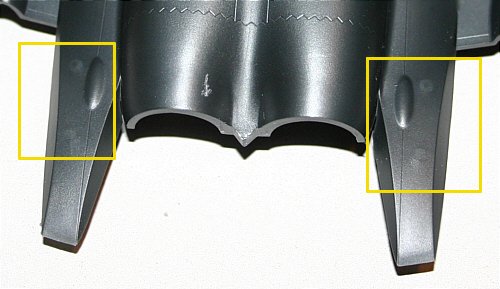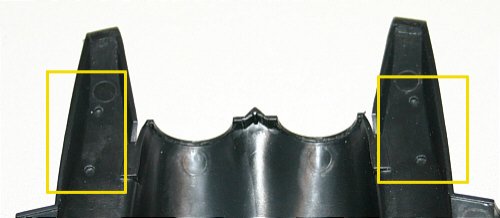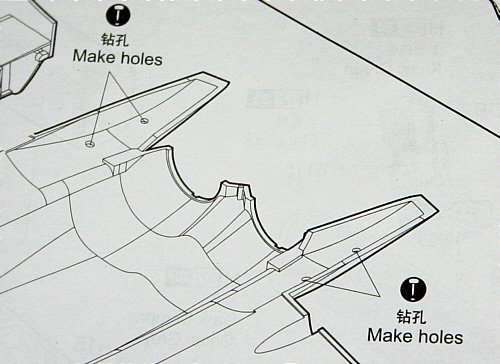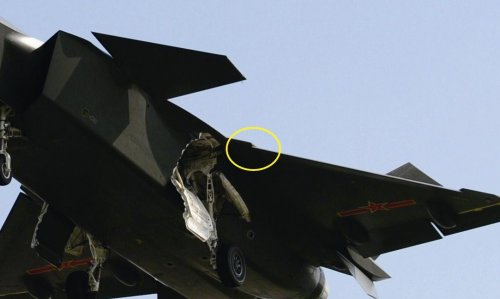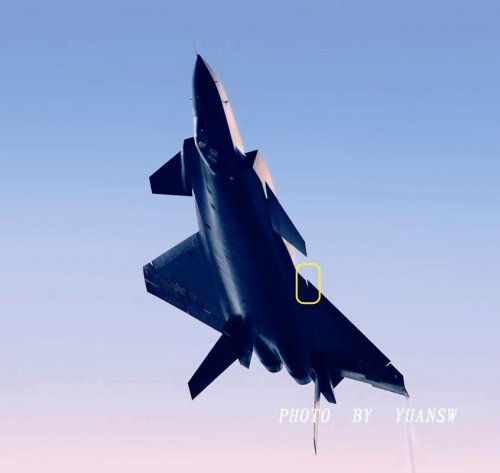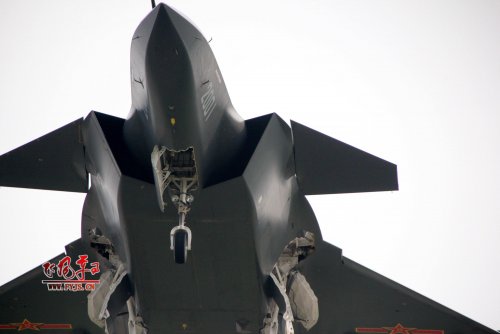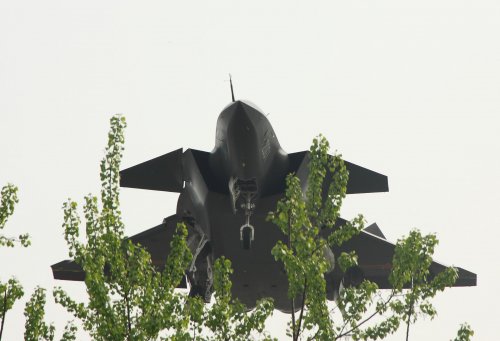You are using an out of date browser. It may not display this or other websites correctly.
You should upgrade or use an alternative browser.
You should upgrade or use an alternative browser.
Chengdu J-20 pictures, analysis and speculation Part I
- Thread starter hantang
- Start date
- Status
- Not open for further replies.
latenlazy said:Because I program, and garbage code often refers to how inefficient and badly implemented the code is as opposed to the accuracy of the actual input and output parameters. For example, windows is a lot of bad coding. It is a poorly thought out GUI design, can be inefficient, and crashes often, but no one's going to dispute that it fudges the actual inputs and outputs.
As a programmer you already know what input and output to expect because everything you do with the computer you can theoretically do by hand. It would just be far more tedious. With more advanced simulation programs, especially simulations that can be tested in the real world, a real world test would be matched with the input and output parameters to verify that the program is doing what it's supposed to and not fudging the results.
This is the most basic aspect of computer science (so basic that this is the first thing you're expected to learn in high school CS), and people in China with PhD degrees in this stuff (way more qualified than I am) wouldn't miss this, even if they suck at programming. The baseline requirement in CS is being able to get the intended result. Garbage code refers to how you got there.
A lot of the best PhDs in China (and not just in CS) are also probably trained in foreign institutions, particularly the US. The guys working on these planes are engineers, not cavemen.
You must not be familiar with the term "GIGO". I'm not talking about code written like a house of cards (I've been in software dev. too), I'm talking about base assumptions. If your theory is wrong, or incomplete, the best software in the world isn't going to fix that for you. For example if I tell my program that 2+2 = 3 it's not going to magically spit out "4" for me.
latenlazy
I really should change my personal text
- Joined
- 4 July 2011
- Messages
- 245
- Reaction score
- 37
I know what GIGO is, but if you're referring to their knowledge in regards to signal reduction, it assumes that there is some secret mystery voodoo in the signals reduction field. I'm saying that signal reductions as a field of knowledge is already well understood. The challenge for signals reduction has always been in the engineering, not the science, and that is greatly assisted by the increase in computing power.sferrin said:You must not be familiar with the term "GIGO". I'm not talking about code written like a house of cards (I've been in software dev. too), I'm talking about base assumptions. If your theory is wrong, or incomplete, the best software in the world isn't going to fix that for you. For example if I tell my program that 2+2 = 3 it's not going to magically spit out "4" for me.
Never said it was "voodoo" (though some mightlatenlazy said:I know what GIGO is, but if you're referring to their knowledge in regards to signal reduction, it assumes that there is some secret mystery voodoo in the signals reduction field. I'm saying that signal reductions as a field of knowledge is already well understood. The challenge for signals reduction has always been in the engineering, not the science, and that is greatly assisted by the increase in computing power.sferrin said:You must not be familiar with the term "GIGO". I'm not talking about code written like a house of cards (I've been in software dev. too), I'm talking about base assumptions. If your theory is wrong, or incomplete, the best software in the world isn't going to fix that for you. For example if I tell my program that 2+2 = 3 it's not going to magically spit out "4" for me.
latenlazy
I really should change my personal text
- Joined
- 4 July 2011
- Messages
- 245
- Reaction score
- 37
I agree, but what I was trying to get at is they don't have to learn any knew theory in China. They need to learn execution and design, both of which computers make a big difference for. I must reiterate that they do have real engineers and scientists there, not monkeyssferrin said:Never said it was "voodoo" (though some might) BUT there is theory and there is practice. Then there are materials and processes to make the materials and production ability etc. Simply spitting out a shape that the computer says is stealthy is a long, LONG way from having one flying in the air.
- Joined
- 21 April 2009
- Messages
- 13,700
- Reaction score
- 7,552
latenlazy said:I agree, but what I was trying to get at is they don't have to learn any knew theory in China. They need to learn execution and design, both of which computers make a big difference for. I must reiterate that they do have real engineers and scientists there, not monkeyssferrin said:Never said it was "voodoo" (though some might) BUT there is theory and there is practice. Then there are materials and processes to make the materials and production ability etc. Simply spitting out a shape that the computer says is stealthy is a long, LONG way from having one flying in the air.
. I don't expect them to just input junk, get junk out, and be happy with it.
I think another way to say what sferrin is saying (correct me if I am wrong Scott) is also the Chinese "don't know what they don't know" as compared to the US with 30 years of trail and error on LO and VLO designs. You can input what you want into the best computer in the world but the "machine" won't overcome ignorance.
latenlazy
I really should change my personal text
- Joined
- 4 July 2011
- Messages
- 245
- Reaction score
- 37
I get that, but I'm trying to say that that learning experience itself is expedited immensely by how powerful computing is these days. The starting point is more advanced because of the increase in computing power, but so is the refining process.bobbymike said:latenlazy said:I agree, but what I was trying to get at is they don't have to learn any knew theory in China. They need to learn execution and design, both of which computers make a big difference for. I must reiterate that they do have real engineers and scientists there, not monkeyssferrin said:Never said it was "voodoo" (though some might) BUT there is theory and there is practice. Then there are materials and processes to make the materials and production ability etc. Simply spitting out a shape that the computer says is stealthy is a long, LONG way from having one flying in the air.
. I don't expect them to just input junk, get junk out, and be happy with it.
I think another way to say what sferrin is saying (correct me if I am wrong Scott) is also the Chinese "don't know what they don't know" as compared to the US with 30 years of trail and error on LO and VLO designs. You can input what you want into the best computer in the world but the "machine" won't overcome ignorance.
A lot of stuff that we used to need to test in the real world can now be tested digitally. Real world testing will always be important because computer models are never perfect, but the learning curve is greatly reduced with digital assistance. It's not like they just stick something in a computer model and go along with it. After they have their way with the model, they build the thing in real life, test it some more while comparing the real world data with the digital data, and then stick the thing back into the computer with the real world data for more digital testing. The volume of and rate of knowledge acquired are both immensely expedited due to this process. As a result experience and competence are both gained much faster.
It's not going to be a GIGO situation, because design and development is and always have been iterative. The tools now are just simply better than they were three decades ago.
- Joined
- 21 April 2009
- Messages
- 13,700
- Reaction score
- 7,552
latenlazy said:I get that, but I'm trying to say that that learning experience itself is expedited immensely by how powerful computing is these days. The starting point is more advanced because of the increase in computing power, but so is the refining process.bobbymike said:latenlazy said:I agree, but what I was trying to get at is they don't have to learn any knew theory in China. They need to learn execution and design, both of which computers make a big difference for. I must reiterate that they do have real engineers and scientists there, not monkeyssferrin said:Never said it was "voodoo" (though some might) BUT there is theory and there is practice. Then there are materials and processes to make the materials and production ability etc. Simply spitting out a shape that the computer says is stealthy is a long, LONG way from having one flying in the air.
. I don't expect them to just input junk, get junk out, and be happy with it.
I think another way to say what sferrin is saying (correct me if I am wrong Scott) is also the Chinese "don't know what they don't know" as compared to the US with 30 years of trail and error on LO and VLO designs. You can input what you want into the best computer in the world but the "machine" won't overcome ignorance.
A lot of stuff that we used to need to test in the real world can now be tested digitally. Real world testing will always be important because computer models are never perfect, but the learning curve is greatly reduced with digital assistance. It's not like they just stick something in a computer model and go along with it. After they have their way with the model, they build the thing in real life, test it some more while comparing the real world data with the digital data, and then stick the thing back into the computer with the real world data for more digital testing. The volume of and rate of knowledge acquired are both immensely expedited due to this process. As a result experience and competence are both gained much faster.
It's not going to be a GIGO situation, because design and development is and always have been iterative. The tools now are just simply better than they were three decades ago.
I do agree with you however that brute force computer can overcome the normal time constraints that were faced in the past from a typical trail and error approach.
latenlazy
I really should change my personal text
- Joined
- 4 July 2011
- Messages
- 245
- Reaction score
- 37
Well, like I said, there's nothing secret about the theories behind signals reduction. It's ultimately an engineering problem, not a scientific one (and this is true for any country nowadays...well tacked with the financial conditions)bobbymike said:I do agree with you however that brute force computer can overcome the normal time constraints that were faced in the past from a typical trail and error approach.
- Joined
- 18 March 2008
- Messages
- 3,529
- Reaction score
- 948
latenlazy said:On the other hand, computing has come a long way since the 70s, and computing was one of the primary advantages that allowed the US to come up with advanced stealth designs. I think the basics of the field in terms of shaping are what they are. The rest is really left to a question of materials.
While computing has advanced so to has leveraging the computing that is available. Sure you could crunch the numbers used to determine the F-117 design on a much more accessible computer these days. But US stealth technology has become far more complex and effective thanks to the more powerful computing. Shaping isn’t just about the outer mould line (OML) or the more obvious configuration of the aircraft. It is also very much shaping below the skin. This is why an aircraft like the F-35 which if it was built in the 1980s would not be super stealthy but using the latest state of the art will be very much a VLO. The US can do this because it has 60+ years of heavy investment in signals management making aircraft harder to detect.
latenlazy
I really should change my personal text
- Joined
- 4 July 2011
- Messages
- 245
- Reaction score
- 37
Absolutely, but an immense part of what is leveraged through computing is created as an output from powerful computing, resulting in an expedited learning process as well.Abraham Gubler said:latenlazy said:On the other hand, computing has come a long way since the 70s, and computing was one of the primary advantages that allowed the US to come up with advanced stealth designs. I think the basics of the field in terms of shaping are what they are. The rest is really left to a question of materials.
While computing has advanced so to has leveraging the computing that is available. Sure you could crunch the numbers used to determine the F-117 design on a much more accessible computer these days. But US stealth technology has become far more complex and effective thanks to the more powerful computing. Shaping isn’t just about the outer mould line (OML) or the more obvious configuration of the aircraft. It is also very much shaping below the skin. This is why an aircraft like the F-35 which if it was built in the 1980s would not be super stealthy but using the latest state of the art will be very much a VLO. The US can do this because it has 60+ years of heavy investment in signals management making aircraft harder to detect.
A country with a good computer infrastructure would not take nearly as long to reach a solution like the F-117 as the US did in the 60s and 70s.
- Joined
- 18 March 2008
- Messages
- 3,529
- Reaction score
- 948
latenlazy said:A country with a good computer infrastructure would not take nearly as long to reach a solution like the F-117 as the US did in the 60s and 70s.
Do you have any evidence to support this claim? Was the HAVE BLUE program delayed because of lack of access to super computers and so on? It only took the US six or so years from discovery of Ufimtsev's paper to flying the first stealth fighter.
- Joined
- 6 August 2007
- Messages
- 3,824
- Reaction score
- 5,606
Abraham Gubler said:latenlazy said:A country with a good computer infrastructure would not take nearly as long to reach a solution like the F-117 as the US did in the 60s and 70s.
Do you have any evidence to support this claim? Was the HAVE BLUE program delayed because of lack of access to super computers and so on? It only took the US six or so years from discovery of Ufimtsev's paper to flying the first stealth fighter.
One of these days I'll finish my article on the history of computational electromagnetics.
Ufimtsev first published "Method of Edge Waves in the Physical Theory of Diffraction" in 1962. Northrop was using some of that work in the late 60s, even though DoD didn't translate Ufimtsev's work until 1971.
By the time HAVE BLUE was active, both Lockheed and Northrop had their own (very different) computational electromagnetics software. Lockheed's ECHO was at the time a physical optics solver. The Ufimtsev work was used to improve ECHO and resulted in ECHO 1. Northrop had (roughly) equivalent software several years before Lockheed (GENSCAT). Northrop's software could do a lot of things that Lockheed's could not (i.e. model the effects of RAM, account for cavitives, etc.) Northrop published a paper on their method in 1974.
TR, interestingly enough, used a fairly sophisticated method of moments solution on the design of their flying triangle in the late 60s.
It was not until these tools were available, accurate, and practical that HAVE BLUE was possible (there were of course other factors as well). Earlier attempts to drastically reduce the signature of an aircraft were not as successful, largely because these kinds of tools were not available.
- Joined
- 21 April 2009
- Messages
- 13,700
- Reaction score
- 7,552
quellish said:Abraham Gubler said:latenlazy said:A country with a good computer infrastructure would not take nearly as long to reach a solution like the F-117 as the US did in the 60s and 70s.
Do you have any evidence to support this claim? Was the HAVE BLUE program delayed because of lack of access to super computers and so on? It only took the US six or so years from discovery of Ufimtsev's paper to flying the first stealth fighter.
One of these days I'll finish my article on the history of computational electromagnetics.
Ufimtsev first published "Method of Edge Waves in the Physical Theory of Diffraction" in 1962. Northrop was using some of that work in the late 60s, even though DoD didn't translate Ufimtsev's work until 1971.
By the time HAVE BLUE was active, both Lockheed and Northrop had their own (very different) computational electromagnetics software. Lockheed's ECHO was at the time a physical optics solver. The Ufimtsev work was used to improve ECHO and resulted in ECHO 1. Northrop had (roughly) equivalent software several years before Lockheed (GENSCAT). Northrop's software could do a lot of things that Lockheed's could not (i.e. model the effects of RAM, account for cavitives, etc.) Northrop published a paper on their method in 1974.
TR, interestingly enough, used a fairly sophisticated method of moments solution on the design of their flying triangle in the late 60s.
It was not until these tools were available, accurate, and practical that HAVE BLUE was possible (there were of course other factors as well). Earlier attempts to drastically reduce the signature of an aircraft were not as successful, largely because these kinds of tools were not available.
I don't know if this is an applicable comparison (I'll let my esteemed fellow SP members decide) but I was reading about high density energetics and a computer program called Cheetah that helps scientists "create" new energetic material. It apparently dramatically helps speed up the process of "what if we put these chemicals together" to determining whether they might hold promise as a new explosive prior to actual synthesis. No it does not change the basic nature of experimentation but researchers get to try out far more combinations of materials in a given time frame.
- Joined
- 17 October 2006
- Messages
- 2,393
- Reaction score
- 1,190
What is this "shaping below the skin" stuff? If you mean "accurate modeling that includes the effects of LO materials" that's been around for 20 years. Or is this the latest way to explain the fact that optics models don't make the F-35 look good?
And the F-35 will either prove or disprove the possibility of building an all-aspect LO vehicle that has adequate fighter performance and is affordable, to the extent that it makes a workable, global replacement for conventional Tacair.
I would suggest that there were three main factors behind the F-117: the development of computer software that could approximate scattering from polyhedral shapes in acceptable time, Ufimtsev's work on diffraction at the edges of the facets, and the idea of making something faceted that would fly, which previously would have been possible, but would have been of no value without the first two.
I believe that the problems were solved on fairly standard computers, not Crays. Big Bertha's no more effective than a trench mortar until you know where the target is. IIRC the biggest computer used on the F-117 was for mission planning and LO routing.
From a counter-intel viewpoint, the main things to protect were the fact that such RCS levels had been achieved and the basic idea of faceting - hence the massive s**t-fit when the Germans showed Lampyridae to a US delegation that included people cleared into Senior Trend. (I can only imagine the scene - nodding politely and saying "Sehr interresant, Herr Doktor" while internally thinking "What the ffffffffuuuuuuu?")
So there is no big magic in emulating LO technology.
Now, it is very difficult at the detail level and there are lots of proprietary and classified ways to do doors, antennas, panel discontinuities &c in ways that are light, inexpensive and durable - and at a more basic level, designing the system to use the fewest of all of them.
I'm sure that the Chinese cyber-espionage machine has been heavily tasked (if not actually created) to solve these problems. Too bad that politics and profits have necessitated a vast supplier base (read "vast attack surface" in CNE-speak) for JSF, and that the program's information systems were designed before anyone was thinking about cyberespionage as it exists today.
And the F-35 will either prove or disprove the possibility of building an all-aspect LO vehicle that has adequate fighter performance and is affordable, to the extent that it makes a workable, global replacement for conventional Tacair.
I would suggest that there were three main factors behind the F-117: the development of computer software that could approximate scattering from polyhedral shapes in acceptable time, Ufimtsev's work on diffraction at the edges of the facets, and the idea of making something faceted that would fly, which previously would have been possible, but would have been of no value without the first two.
I believe that the problems were solved on fairly standard computers, not Crays. Big Bertha's no more effective than a trench mortar until you know where the target is. IIRC the biggest computer used on the F-117 was for mission planning and LO routing.
From a counter-intel viewpoint, the main things to protect were the fact that such RCS levels had been achieved and the basic idea of faceting - hence the massive s**t-fit when the Germans showed Lampyridae to a US delegation that included people cleared into Senior Trend. (I can only imagine the scene - nodding politely and saying "Sehr interresant, Herr Doktor" while internally thinking "What the ffffffffuuuuuuu?")
So there is no big magic in emulating LO technology.
Now, it is very difficult at the detail level and there are lots of proprietary and classified ways to do doors, antennas, panel discontinuities &c in ways that are light, inexpensive and durable - and at a more basic level, designing the system to use the fewest of all of them.
I'm sure that the Chinese cyber-espionage machine has been heavily tasked (if not actually created) to solve these problems. Too bad that politics and profits have necessitated a vast supplier base (read "vast attack surface" in CNE-speak) for JSF, and that the program's information systems were designed before anyone was thinking about cyberespionage as it exists today.
latenlazy
I really should change my personal text
- Joined
- 4 July 2011
- Messages
- 245
- Reaction score
- 37
I think it's the point about signals management for radar transparent materials. Presumably if the material is transparent to radar then the shaping below the skin is important too.LowObservable said:What is this "shaping below the skin" stuff? If you mean "accurate modeling that includes the effects of LO materials" that's been around for 20 years. Or is this the latest way to explain the fact that optics models don't make the F-35 look good?
- Joined
- 6 August 2007
- Messages
- 3,824
- Reaction score
- 5,606
latenlazy said:Presumably if the material is transparent to radar then the shaping below the skin is important too.
No such thing. All materials have varying degrees of opacity to a given frequency. None are completely transparent.
You can make materials/structures that are more transparent to specific frequencies, polarizations, etc. but this is very difficult even on a small scale, which is why it took so long to make a useful "stealth radome" (BSAX and the B-2 were apparently easier than, say, the ATF).
latenlazy
I really should change my personal text
- Joined
- 4 July 2011
- Messages
- 245
- Reaction score
- 37
No such thing as shaping consideration below the skin or no such thing as a transparent material? Because with the latter I was presuming target frequencies. Otherwise transparent by colloquial definition would be redundant.quellish said:latenlazy said:Presumably if the material is transparent to radar then the shaping below the skin is important too.
No such thing. All materials have varying degrees of opacity to a given frequency. None are completely transparent.
You can make materials/structures that are more transparent to specific frequencies, polarizations, etc. but this is very difficult even on a small scale, which is why it took so long to make a useful "stealth radome" (BSAX and the B-2 were apparently easier than, say, the ATF).
quellish said:latenlazy said:Presumably if the material is transparent to radar then the shaping below the skin is important too.
No such thing. All materials have varying degrees of opacity to a given frequency. None are completely transparent.
You can make materials/structures that are more transparent to specific frequencies, polarizations, etc. but this is very difficult even on a small scale, which is why it took so long to make a useful "stealth radome" (BSAX and the B-2 were apparently easier than, say, the ATF).
I seem to recall a Kelly Johnson quote to the effect (regarding plastic as I recall) that after so much thickness it may as well have been aluminum.
- Joined
- 6 August 2007
- Messages
- 3,824
- Reaction score
- 5,606
latenlazy said:No such thing as shaping consideration below the skin or no such thing as a transparent material? Because with the latter I was presuming target frequencies. Otherwise transparent by colloquial definition would be redundant.
No such thing as transparent.
overscan said:Okie dokie.
So, the length of the MiG-21F-3 fuselage from intake lip to engine exhaust is 12.177m from Mikoyan documents.
The length from centrecone tip to tip of tail is 13.46m.
Assumption: J-7E appears to have an unchanged fuselage length over MiG-21F-3.
Using this as my base value I get the following:
J-7E - 13.79m (excl pitot), 14.95m (incl. pitot)
This seems reasonable - thats a little bit longer than the MiG-21F-3 which might be due to the apparently larger nosecone.
Moving to JF-17
JF-17 - 14.1m (excl pitot), 14.86m (incl. pitot)
This again is reasonable - PAF is quoting 49ft (14.94m) but this is obviously a rounded off figure.
Now J-10B
J-10B - 16.95m
Again, seems reasonable - J-10A is 16.43m, and J-10B nosecone looks longer.
J-20 - 20.53m (excluding pitot)
Therefore I agree with J-20 "Hotdog". It's 20.5m in length.
All of these calculation were put in right presumption but last step.
The last step based on photo pixel by measurement, but the photo is merely 600~700 pixel in width, small enough to make huge deviation.
- Joined
- 2 January 2006
- Messages
- 3,797
- Reaction score
- 4,869
consealed said:All of these calculation were put in right presumption but last step.
The last step based on photo pixel by measurement, but the photo is merely 600~700 pixel in width, small enough to make huge deviation.
Why ??? ... agreed that these "specifications" are maybe not 100% matching the manufactur's data, but given the relation between all aircraft, their known dimensions we surely can assume that they are as close as possible. (And surely not that big that the J-20 is "again" 22m long) ;D
- Joined
- 1 November 2009
- Messages
- 638
- Reaction score
- 425
Yes. I'm talking about a model kit here in Aerospace but I think this is the place for what I'm going to say. (And if it isn't, I'm sure Scott will give me a subtle hint - as is his way. ;D )
On the Trumpeter 1/72 scale kit of the J-20 I noticed that the holes for attaching the ventral fins are molded closed and the instructions call for the builder to open these holes. In my modeling experience I've seen this done when the model company is either offering a build option in that release in which those parts would not be used or they are planning a different release that will not use those parts. Does Trumpeter know something about the future of the J-20?
How important would these fins be? As someone else suggested in this thread the engines we are seeing may not be the final intended ones for this design in production. Could there be an engine configuration that would negate the need for these fins?
Or, am I trying to read too much into a mold-maker's error?
On the Trumpeter 1/72 scale kit of the J-20 I noticed that the holes for attaching the ventral fins are molded closed and the instructions call for the builder to open these holes. In my modeling experience I've seen this done when the model company is either offering a build option in that release in which those parts would not be used or they are planning a different release that will not use those parts. Does Trumpeter know something about the future of the J-20?
How important would these fins be? As someone else suggested in this thread the engines we are seeing may not be the final intended ones for this design in production. Could there be an engine configuration that would negate the need for these fins?
Or, am I trying to read too much into a mold-maker's error?
Attachments
- Joined
- 1 April 2006
- Messages
- 11,328
- Reaction score
- 9,922
we demand out-the-box review! with many photos!))The Artist said:On the Trumpeter 1/72 scale kit of the J-20
- Joined
- 1 November 2009
- Messages
- 638
- Reaction score
- 425
flateric said:we demand out-the-box review! with many photos!))The Artist said:On the Trumpeter 1/72 scale kit of the J-20
I've already started building the thing but I think I can work something up. Give me a few days.
I can give you my immediate impression on opening the box. While the front end shows F-22 and X-35/F-35 influence, I found myself thinking more about the Su-47 (S-37) Berkut while looking over the parts. Additionally, I thought "Why are they copying Matchbox's 'Molded In Three Color' ploy?" (Black, White and Blue-Grey plastic.)
Kryptid
ACCESS: Secret
- Joined
- 12 March 2009
- Messages
- 282
- Reaction score
- 48
Surely he was speaking of the ventrals only?flanker said:Yes, J-20 will be fin-less. :
A
AAAdrone
Guest
Kryptid said:Surely he was speaking of the ventrals only?flanker said:Yes, J-20 will be fin-less. :
He is. Nowhere in his post does he talk about any other series of fins than the ventrals.
- Joined
- 2 January 2006
- Messages
- 3,797
- Reaction score
- 4,869
flateric said:we demand out-the-box review! with many photos!))
Here's a nice one !!
http://www.scalesky.com/review/model-kit/095-trumpeter-1-72-chinese-j-20-mighty-dragon.html
- Joined
- 27 December 2005
- Messages
- 17,654
- Reaction score
- 25,656
Something I've been noticing in recent high-res photos is the careful shaping of the gap between the leading edge flap and the fixed parts. Very reminiscent of the F-22. If you go to this trouble, you would presumably know what you were doing with the canards too.
Raptor_101
ACCESS: Restricted
- Joined
- 26 August 2009
- Messages
- 28
- Reaction score
- 12
I also have noticed that the rounded chines match closely with the curvature of the intakes at the front in shots of the bottom of the plane.
flanker
ACCESS: Top Secret
- Joined
- 20 March 2008
- Messages
- 933
- Reaction score
- 255
Kryptid said:Surely he was speaking of the ventrals only?flanker said:Yes, J-20 will be fin-less. :
My bad! I confused the parts, it looked like top fuselage to me. :-X
No, and yes......The Artist said:In my modeling experience I've seen this done when the model company is either offering a build option in that release in which those parts would not be used or they are planning a different release that will not use those parts. Does Trumpeter know something about the future of the J-20?
Or, am I trying to read too much into a mold-maker's error?
You read too much.
In my model experience, such holes not be opened just because the hole at a position where the part is too small and weak to make the hole to be penetrated by mould so that has to be made by handwork.
- Joined
- 1 November 2009
- Messages
- 638
- Reaction score
- 425
The Artist said:flateric said:we demand out-the-box review! with many photos!))The Artist said:On the Trumpeter 1/72 scale kit of the J-20
I've already started building the thing but I think I can work something up. Give me a few days.
I can give you my immediate impression on opening the box. While the front end shows F-22 and X-35/F-35 influence, I found myself thinking more about the Su-47 (S-37) Berkut while looking over the parts. Additionally, I thought "Why are they copying Matchbox's 'Molded In Three Color' ploy?" (Black, White and Blue-Grey plastic.)
It seems to me that the review (or whatever I'll call it) should be posted in the modeling section so I'll post the stuff there. However, I will post these stats here - scaled up from the model - which is still in progress.
Wing Span - 43 ft / 13.1064 m
Length (Without the probe, exhausts or the verticals) - 66 ft / 20.1168 m
Wing at root - 22 ft 6 in / 6.858 m
Distance between canard roots - 12 ft 10 in / 3.9116 m
Lower weapons bay width - 6 ft 6 in / 1.9812 m
Lower weapons bay length - 13 ft 8 in / 4.1656 m
Side weapons bay length - 8 ft 6 in / 2.5908 m
Again, these estimates were scaled up from the model and these are based on what I've completed so far.
The Artist said:Length (Without the probe, exhausts or the verticals) - 66 ft / 20.1168 m
Without exhausts or the vertical fins? B)
Was the exhausts said by you meant nozzles?
- Status
- Not open for further replies.
Similar threads
-
-
-
Shenyang FC-31 demonstrators / J-35 naval fighter / J-35A land-based version
- Started by Foxglove
- Replies: 962
-
-

